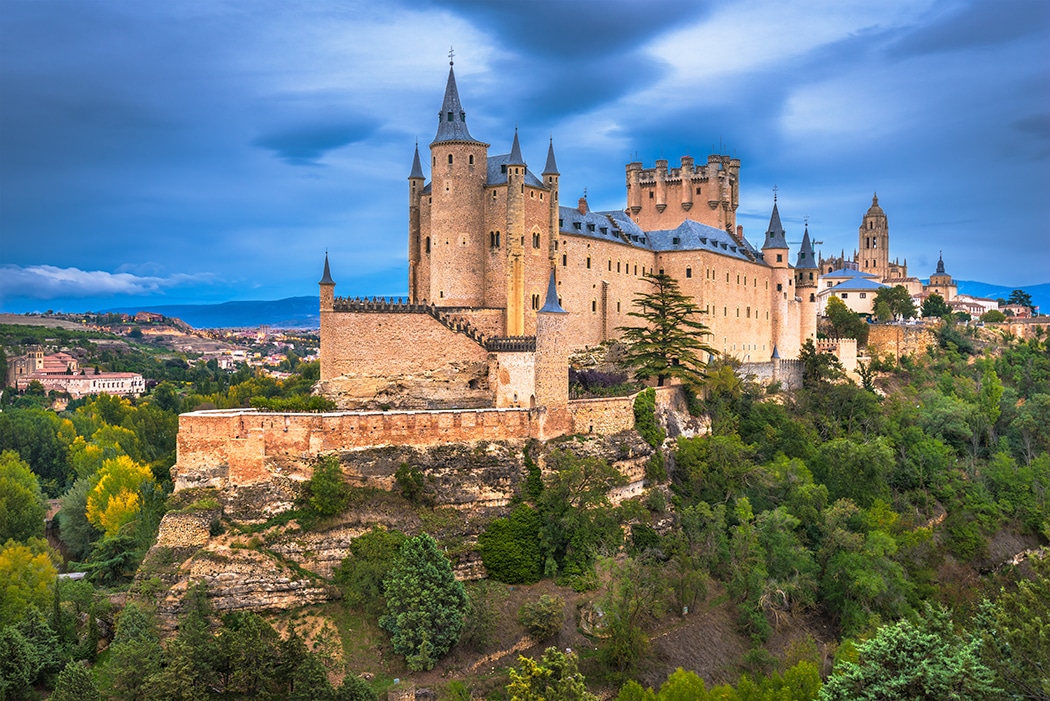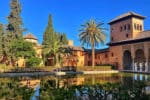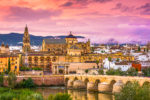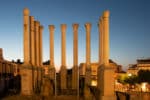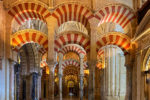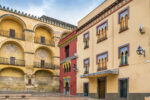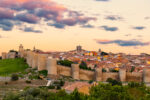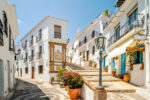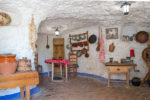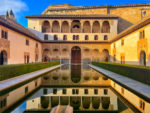Looking for things to do in Segovia on a day trip from Madrid? Here’s how to make the most of it without rushing or missing any of Segovia’s most beloved sites
Segovia is a fairytale-like medieval town set around an enormous Roman aqueduct. Over the centuries, Segovia has been shaped by three different empires: Roman, Arab, and Catholic Monarchy, all of whom left their traces on the landscape of the city. Today, this heritage is safeguarded by Segovia’s status as a UNESCO World Heritage site.
Lying less than 100 km north of Madrid, Segovia makes for an easy and spectacular day trip. You can comfortably see the city’s key monuments in a day. But if you have more time, there are plenty of things to do in Segovia to keep you busy exploring for a few days.
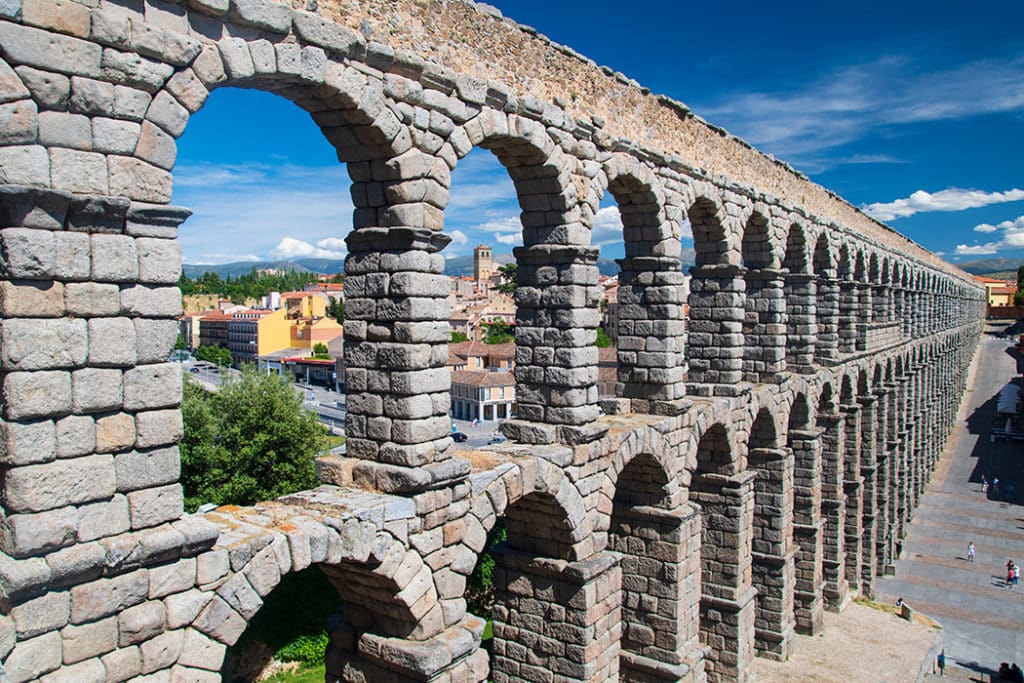
How To Visit Segovia
It takes less than half an hour to get to Segovia by high-speed train (more details at the end of the post), which makes this beautiful city one of the best day trips from Madrid by train.
Or you can join an organized tour from Madrid. The tour typically combines Segovia with a visit to Toledo or Avila, which makes for a spellbinding day of medieval walls, castles and Roman aqueducts.
And if you are short on time, you can even take a half-day tour to Segovia. Whatever you choose, don’t leave Spain without taking a day trip from Madrid to Segovia.
If you would like to combine two cities into one tour, I can personally recommend Avila and Segovia Day Trip with Tickets to Monuments tour. On this tour, English speakers are guided by an English-speaking guide, while Spanish speakers are guided by a Spanish-speaking guide. And with the guide’s commentary, you can learn the key things about each monument you visit much quicker than you would on your own, which then leaves you more time to visit other sites.
If visiting in winter, keep in mind that because Segovia lies a kilometre above sea level, it is considerably cooler than Madrid, and in winter, the city is covered by a blanket of snow.
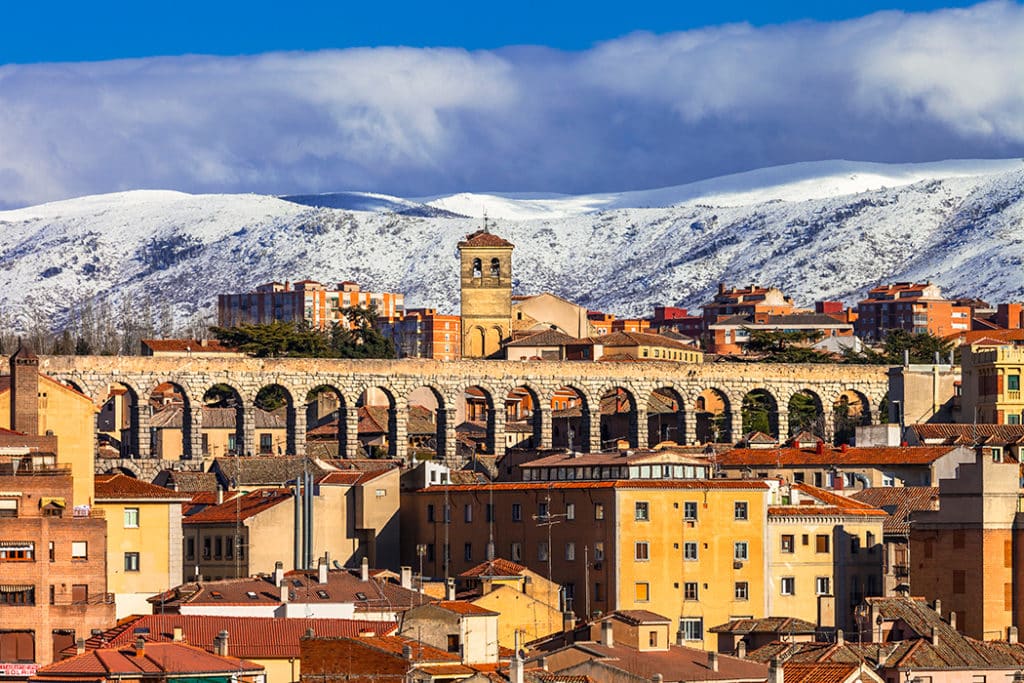
Segovia has enough architectural delights to keep you busy for days, but if you are visiting Segovia on a day trip from Madrid and looking for a journey of discovery rather than a list-ticking exercise, I suggest concentrating on a few key sites: The Alcazar, the Cathedral, the Roman Aqueduct and one or two Romanesque churches.
This guide shows you how to make the most of the day trip from Madrid to Segovia without rushing about or missing any of the key sites.
The Walls of Segovia
The walls of Segovia tend to be overshadowed by the town’s more famous attractions but they are an impressive part of Segovia’s medieval character.
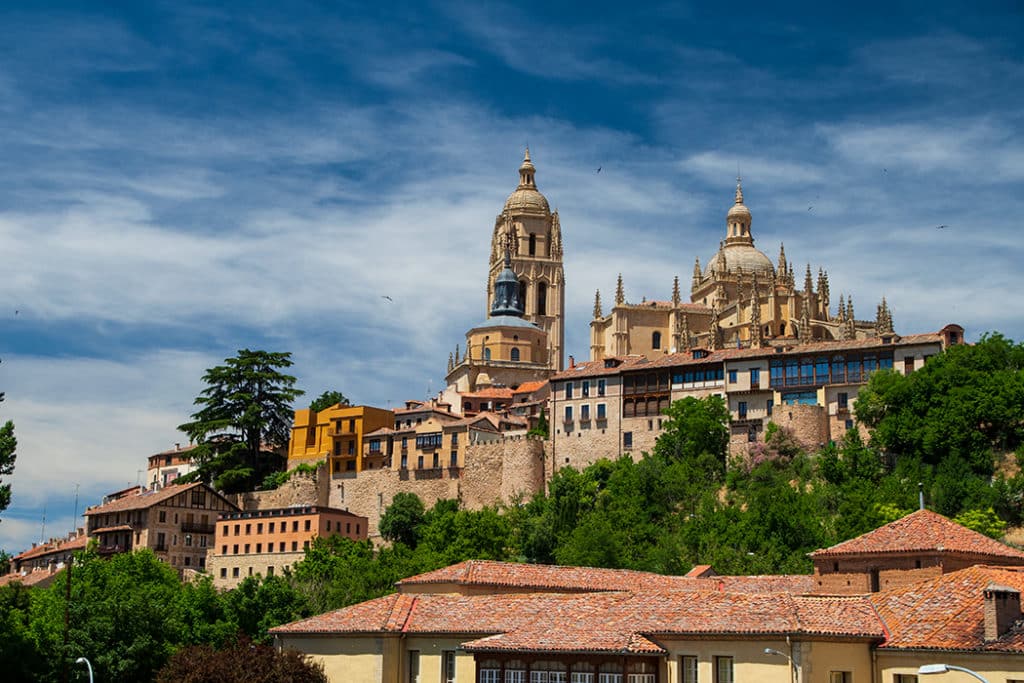
Built to defend Segovia from the Arab invaders, the walls used to surround the whole town, like the walls of Avila do to this day. These impressive defence structures are almost 3.5 km long, 3.5 meters thick and reach 10 meters in height from their base down the hill to the top of the battlement.
A little-known fact is that tombstones from the Roman necropolis were used in the construction of the walls.
The most intact and impressive portion of the walls lies just to the west of the Cathedral, near the Gate of San Andrés (Puerta de San Andres). You can start your explorations of Segovia by walking into the city through Puerta de San Andres and following the course of the city walls towards the Alcazar.
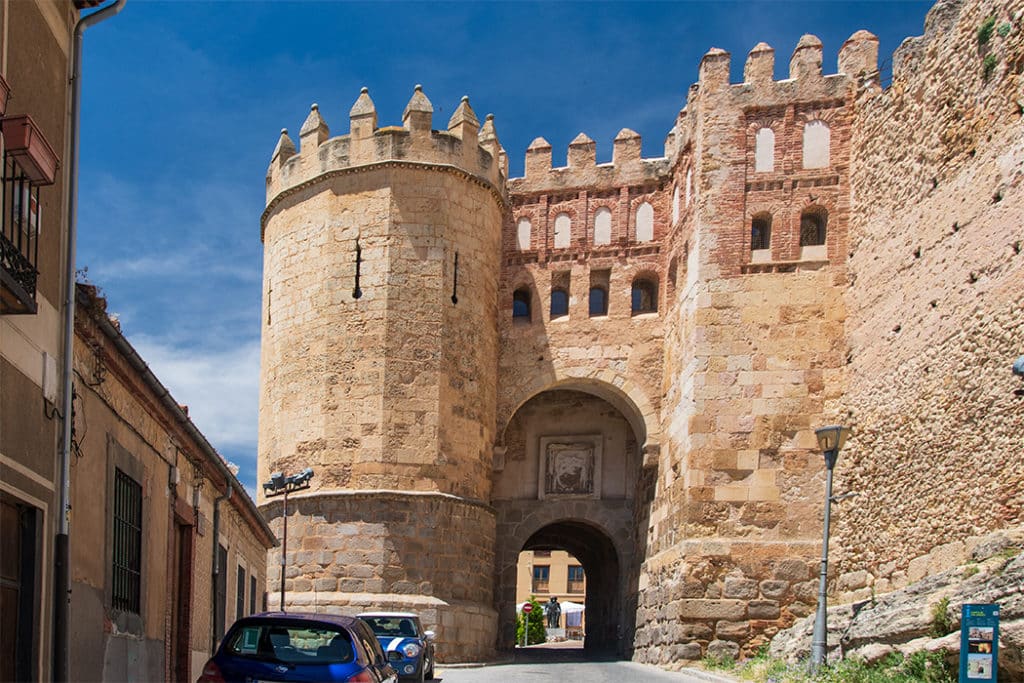
This particular section of Segovia city walls is not as well preserved (though you can still see the battlements and the remnants of the towers) but from this vantage point, you can really appreciate the strategic location of the Alcazar on top of an impressive hill.
Tip: Just before you reach the bridge that spans a dry moat toward the castle, look below that bridge and you will see that it sits on top of a Roman aqueduct. It is a much smaller version of the Segovia Aqueduct that had been incorporated into the foundation of the Alcazar.
The Alcazar of Segovia
Rising above the city on a rocky hill, the Alcázar of Segovia is one of the finest castles in Spain. Like most buildings in Segovia, the Alcazar was built on the foundations of a Moorish structure that itself was constructed on the site of a Roman fort. Of all the things to do in Segovia, the Alcazar is a must.
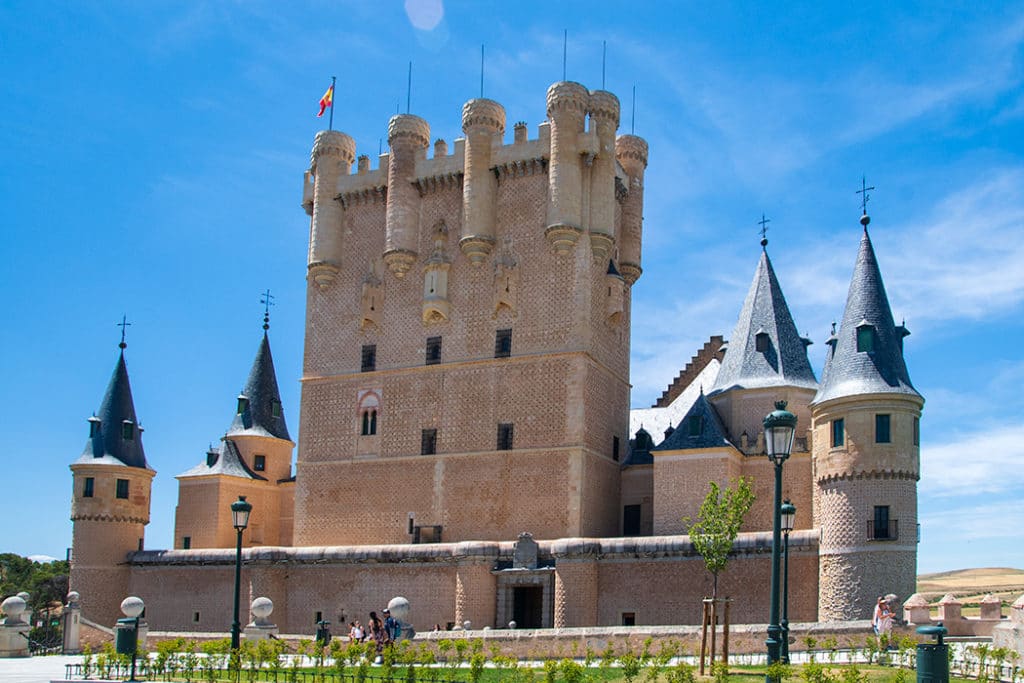
Segovia castle owes its unique ‘Austrian’ appearance to the renovations conducted by King Philip II, who was married to Anna of Austria. During this renovation, sharp slate spires that reflected the appearance of Central European castles were added to the palace. However, on closer look, the spires reminded me of the Moorish architecture of Granada‘s Alhambra fortress and Cordoba‘s Mezquita.
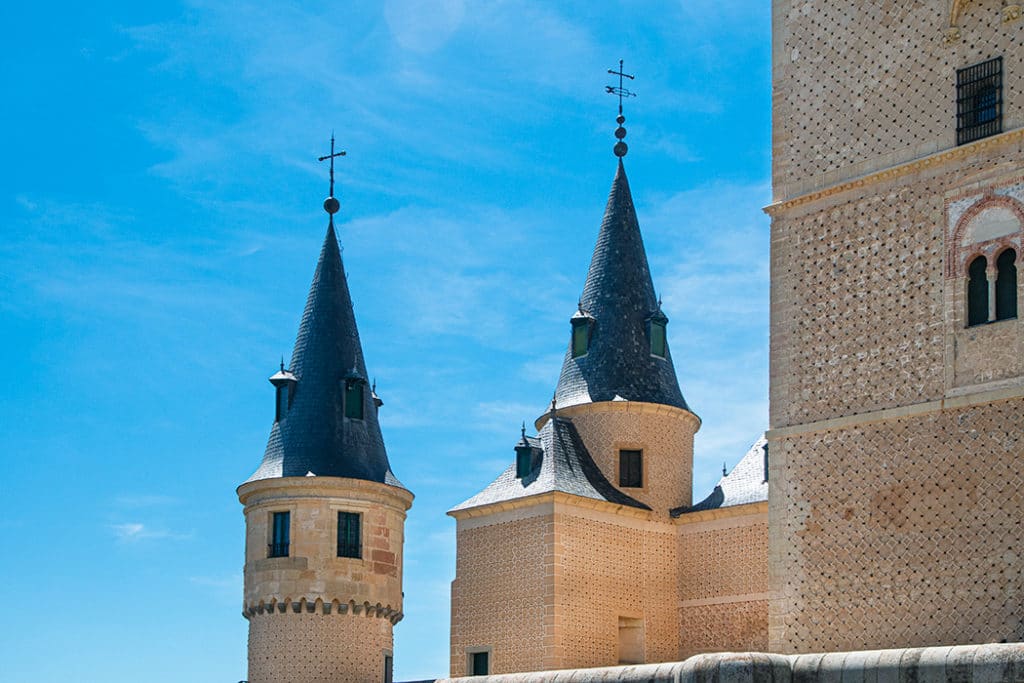
Before you head into the Alcazar, have a look at the top of the trees growing in front of it, and you will likely spot White Storks. These beautiful birds like to nest in the treetops here. If you visit in spring, you are likely to see young birds waiting for their parents to deliver food.
Yet, as stunning as Segovia Alcazar is from the outside, it is just as gorgeous inside. Your journey through the Alcazar starts in the entrance hall, where you can see some preserved Moorish patterns on the walls before you enter the room with a fine display of medieval armour.
As you make your way through the castle, you’ll visit the Throne Room, the Bedrooms of the King and the Queen, and magnificent reception Halls. Some of the most interesting halls are the Alabaster Hall and the Hall of the Monarchs.
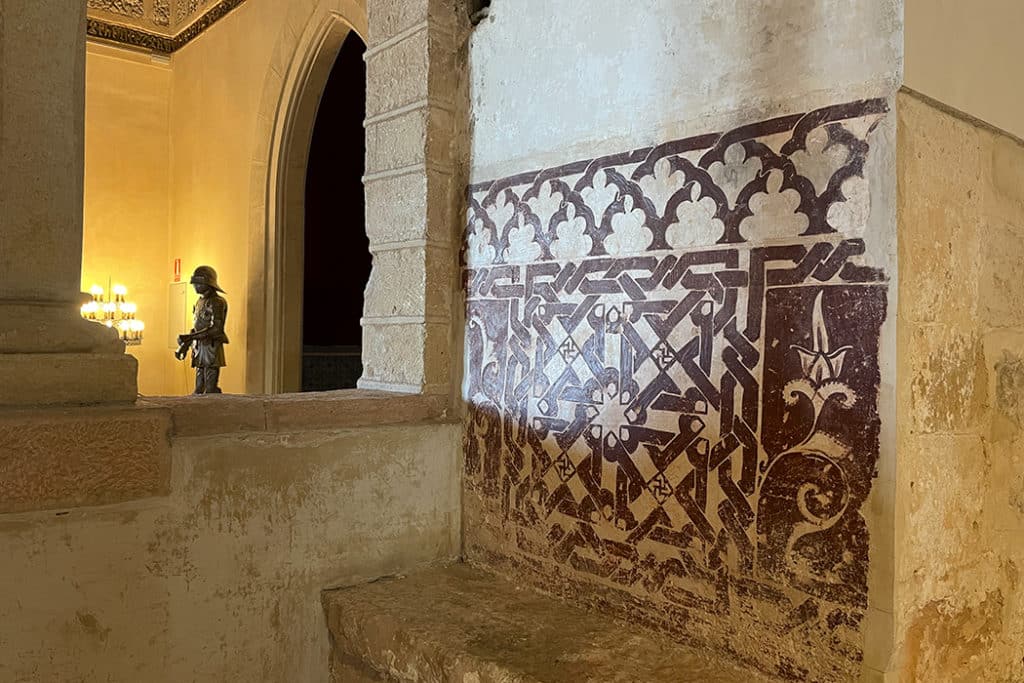
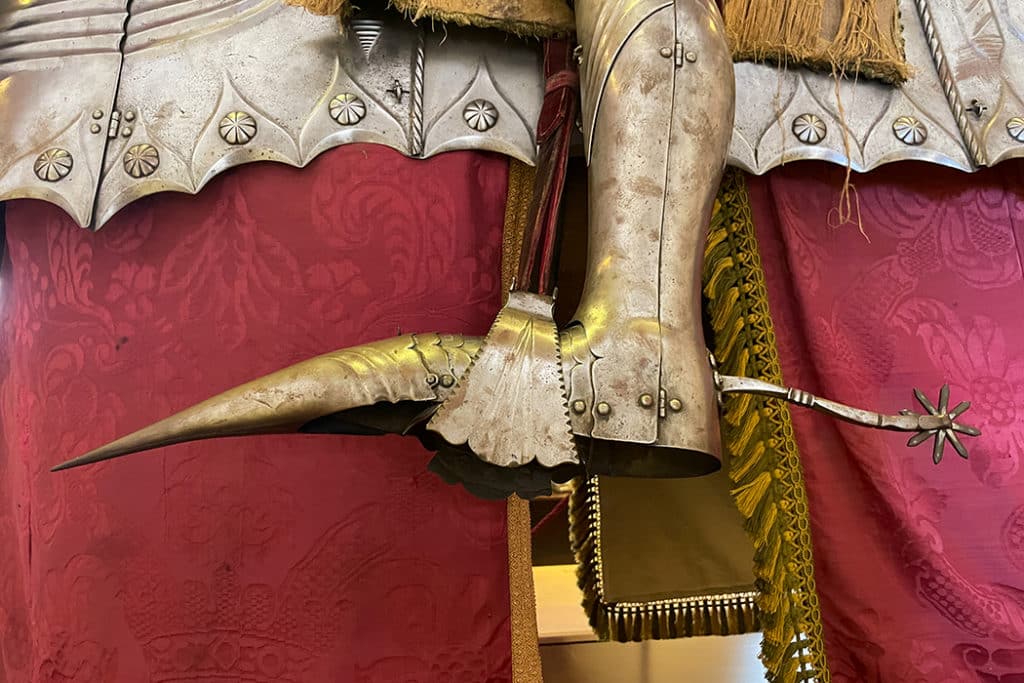
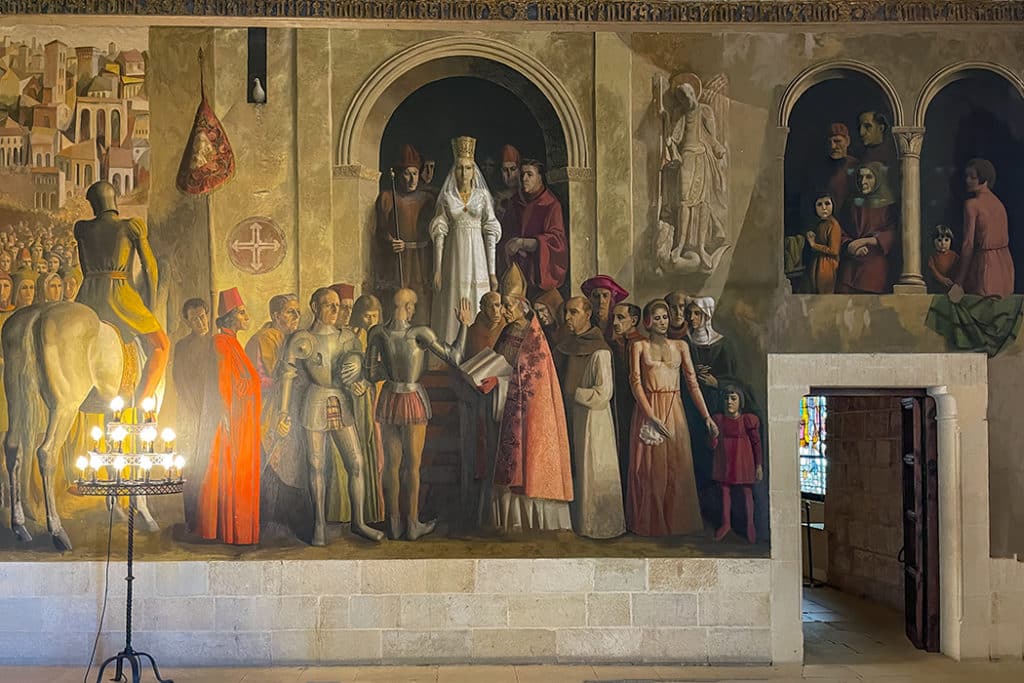
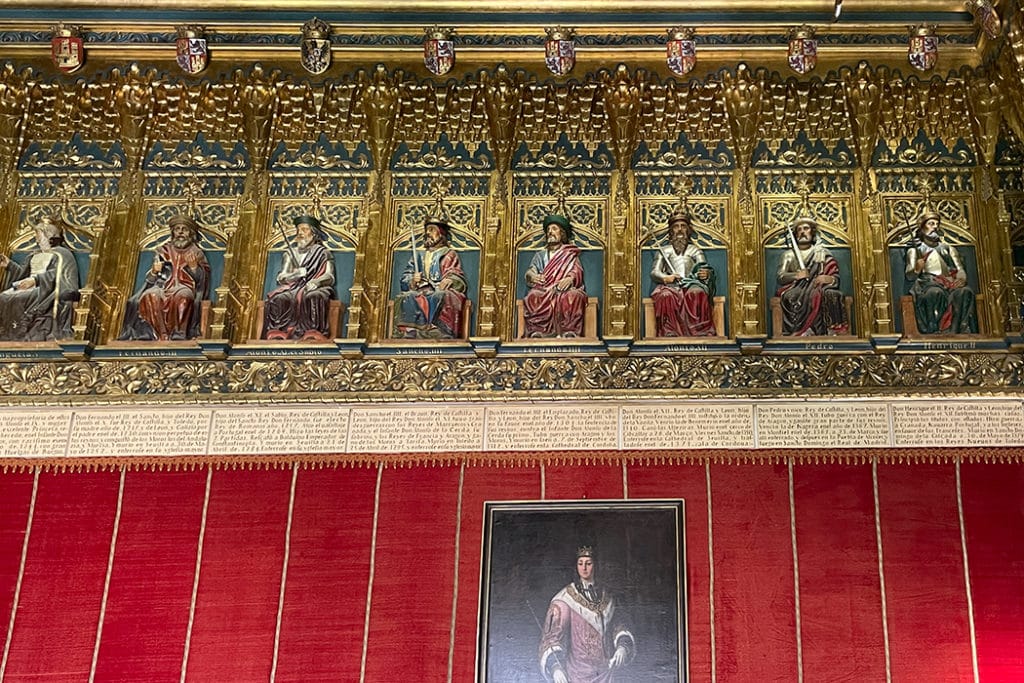
The centrepiece of the Alabaster Hall is the wall-size painting of the coronation of Isabella of Castile and Leon. The pairing is visually arresting because of its enormous size. But if you look closely, you’ll notice that none of the people in the painting have eyes. Some have their eyes cast down, like Isabella, while others have unnerving black voids in place of their eyes.
The Hall of the Monarchs is interesting for the fifty-two statues of Christian kings carved from wood along the top half of the wall. These statues represent the kings and queens of Spain who thought in the Reconquista – the 800-year-long rebellion of the Christian monarchs against the Arab conquers.
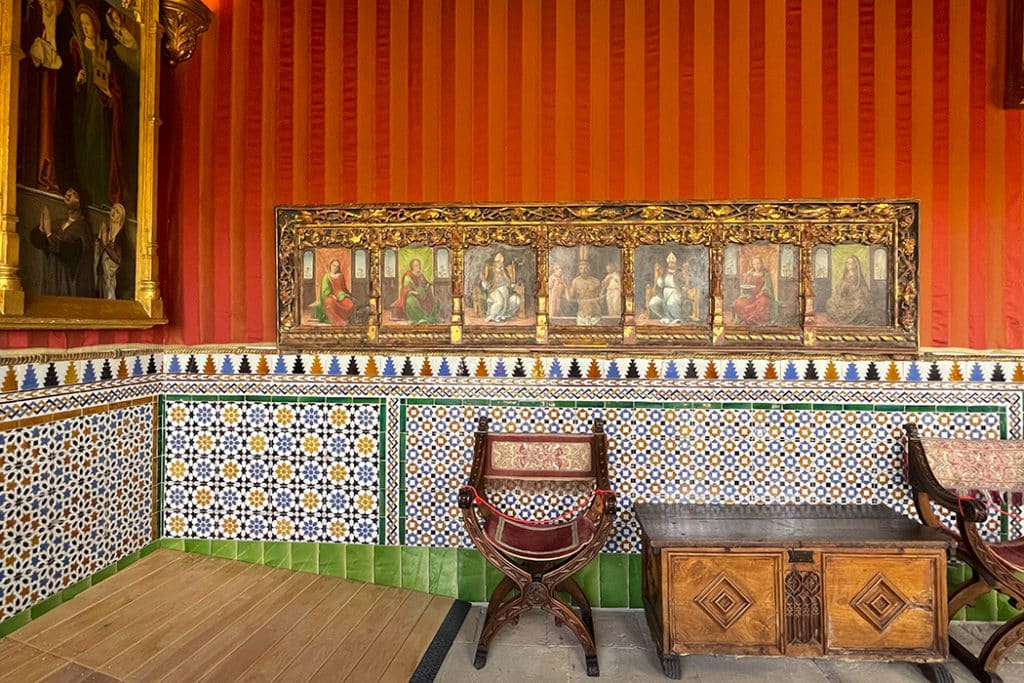
An interesting fact is that the year that the Christian Kings finally won the centuries-long war, is the year they funded Columbus’ journey to the Americas. Some historians believe that the warring lifestyle of Spaniards during the Reconquista explains the brutality of their conquest of the Americas.
Apart from the statues, this hall has one of the most spectacular guided ceilings in the castle. It is so vivid and bright that it is hard to believe it is centuries old.
Some halls have beautiful arched windows opening up on peaceful countryside and the picturesque small Romanesque church – Iglesia de la Vera Cruz perched along a road just outside the city walls.
Iglesia de la Vera Cruz & Alcazar Viewpoint
After you finish exploring the Alcazar, take a walk down the hill to Pradera de San Marcos for the best views of the castle and then continue to Iglesia de la Vera Cruz.
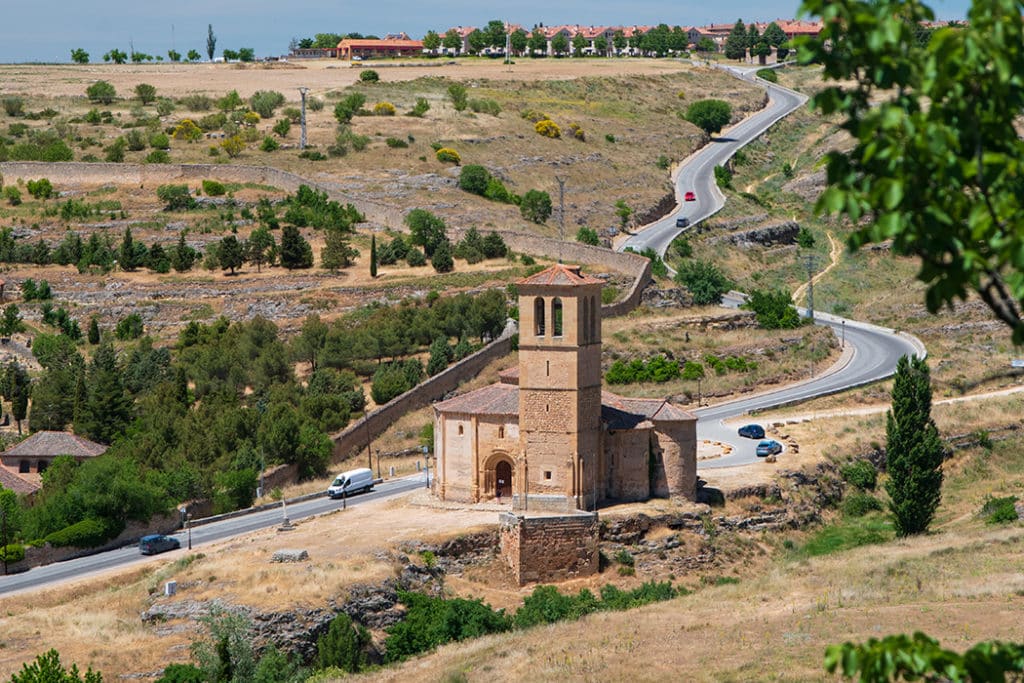
This is the prettiest Roman church in Segovia and the best-preserved church of this kind in Europe.
It was consecrated in 1208 by the Order of the Holy Sepulchre. The church’s interior transports you to the world of knights and crusaders. There are Crusaders’ flags in the nave and insignia of the Order of Malta painted everywhere. Amazingly, this order is still active today!
By now, you will be getting hungry, so it’s a good idea to stop for lunch. Pick a cafe on the winding streets of Segovia’s old town and sample some local cuisine.
The Cathedral of Segovia
After lunch, make your way to Plaza Mayor and the Cathedral of Segovia. This imposing 16th-century Gothic cathedral is one of the must-see sights of Segovia.
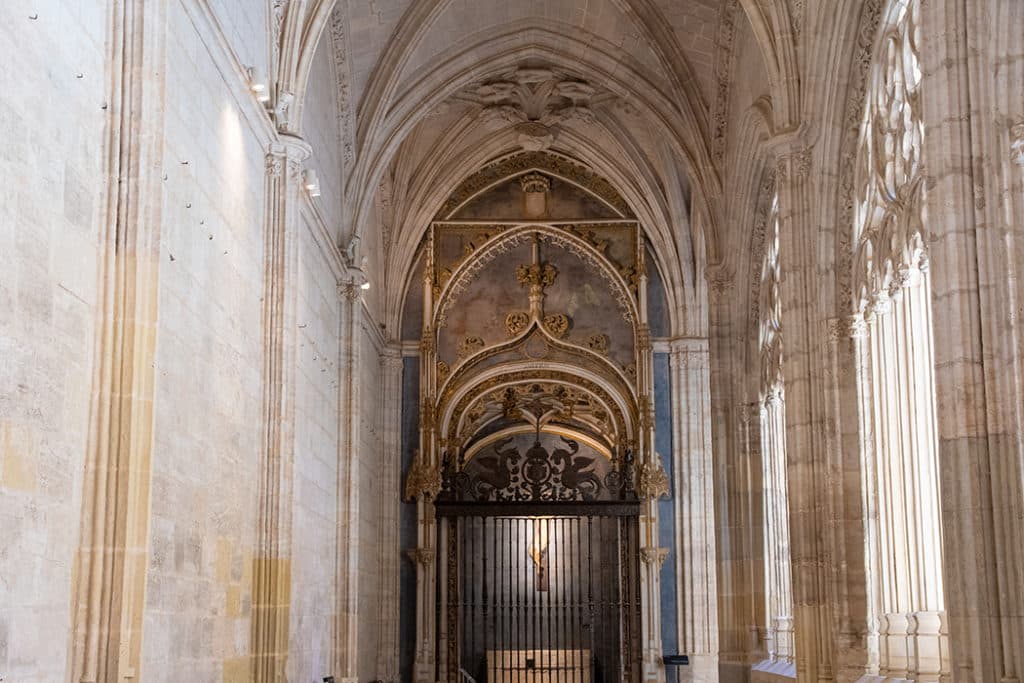
Like all Gothic cathedrals, the proportions of the Cathedral of Segovia are impressive. These structures were built to inspire a sense of Awe at the divine in those who enter.
But the Cathedral of Segovia is more than an impressive building. It is also an art museum with many famous religious artworks painted on the walls or displayed in its chapels, like The Tree of Life in the Chapel of the Immaculate Conception (Capilla de la Concepción).
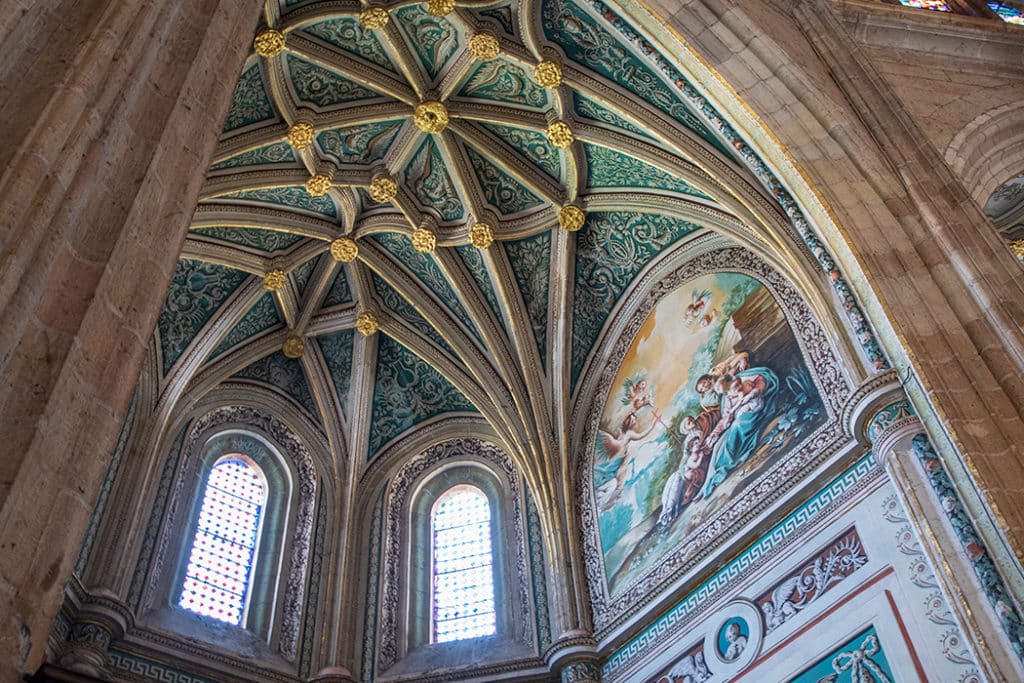
In fact, the 18 chapels of Segovia Cathedral were my favourite areas to explore. Each chapel has a theme, there is even one dedicated to (domestic) animals. There is so much detail and so much finesse in their design that it feels like visiting 18 different cathedrals.
Give yourself at least 30-40 minutes to slowly wander from one chapel to the next, to experience the hushed grandeur of the cathedral and appreciate its stunning art.
The Jewish Quarter
From the Cathedral, wander through the old Jewish quarter of Segovia. This neighbourhood was inhabited by the city’s Jewish community since the 12 century, and at one time, it was one of the wealthiest communities in Castile.
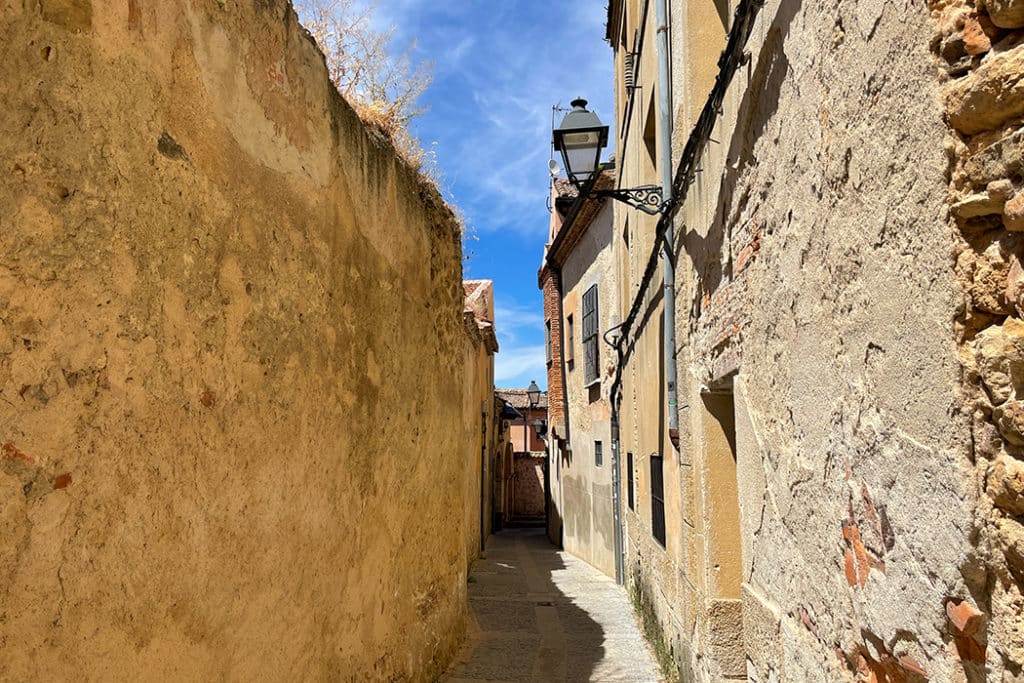
Wander along Juderia Vieja (Old Jewish Street) past the rustic houses with arched doorways and wrought iron balconies, cute-as-a-button shops and restaurants.
Explore Plaza de Medina del Campo – a small but beautiful plaza with two statues of the sphinx, a gorgeous 12th-century Church of San Martin and a monument to Juan Bravo.
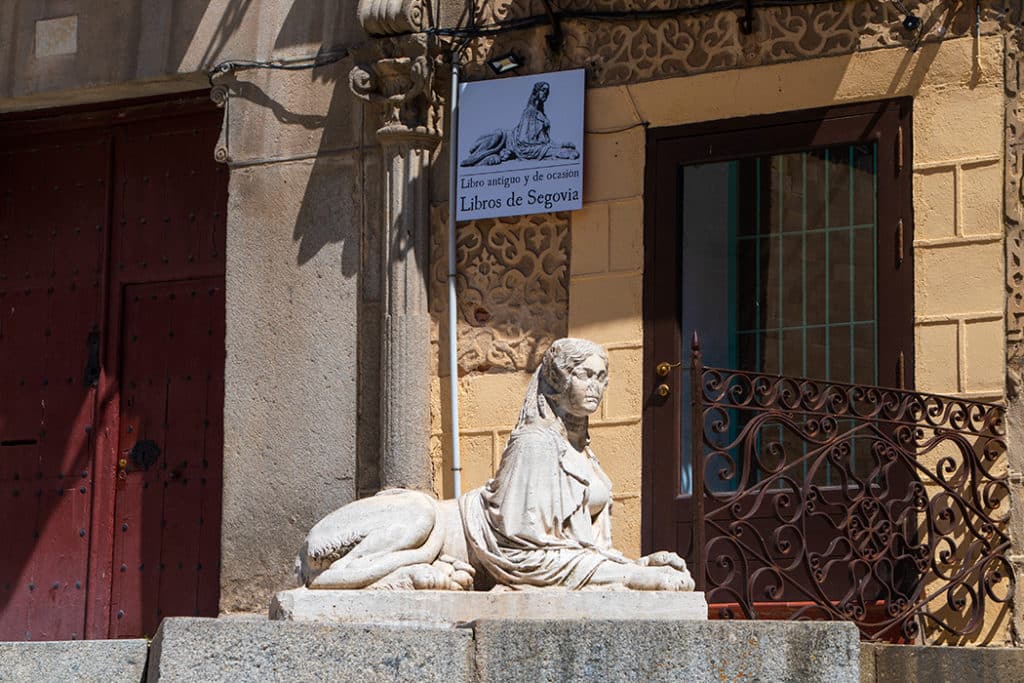
Since 1481, Segovia’s Jewish quarter has been enclosed by seven gates that separate it from the rest of town. One of the gates was near Plaza de Medina del Campo.
Mirador de la Canaleja & Casa de Los Picos
As you continue along Calle Juan Bravo, you soon pass one of Segovia’s most famous houses – the 15th-century Casa de Los Picos. The house has a very unusual facade made of over 600 granite points. These brutalist granite peaks are in stark contrast with the adjoining wall that has been adorned with delicate graffito flowers.
You can’t enter Casa de Los Picos, but it is a fascinating building to admire and fun to take pictures of.
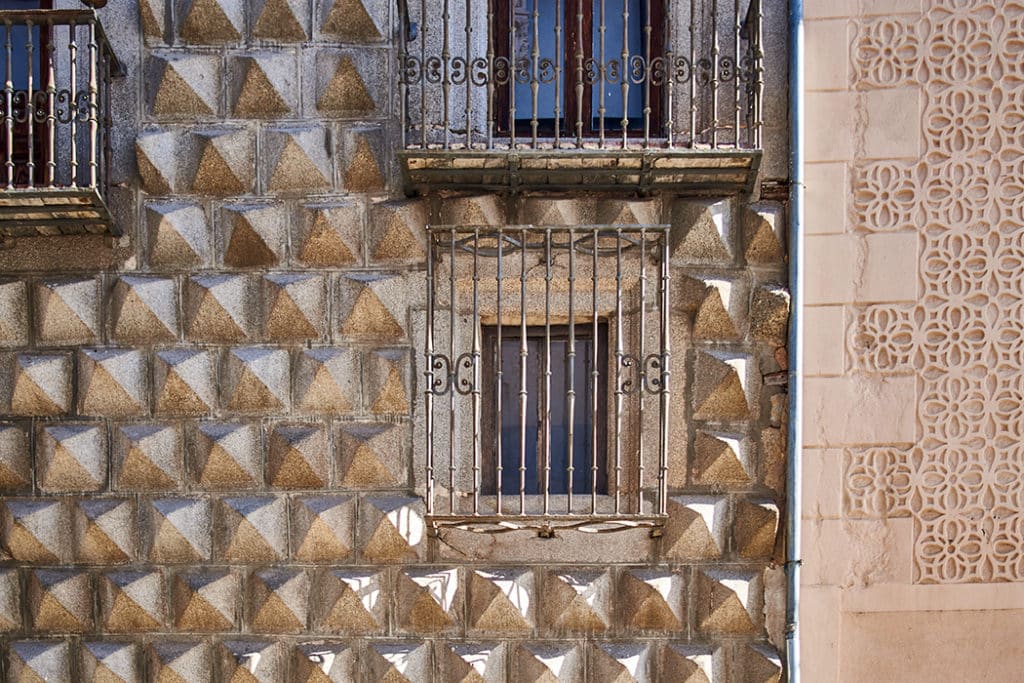
Right next to the house is a beautiful viewpoint, Mirador de la Canaleja. This is a great spot to linger for a few minutes to absorb the views over the southern part of the city framed by the distant mountains.
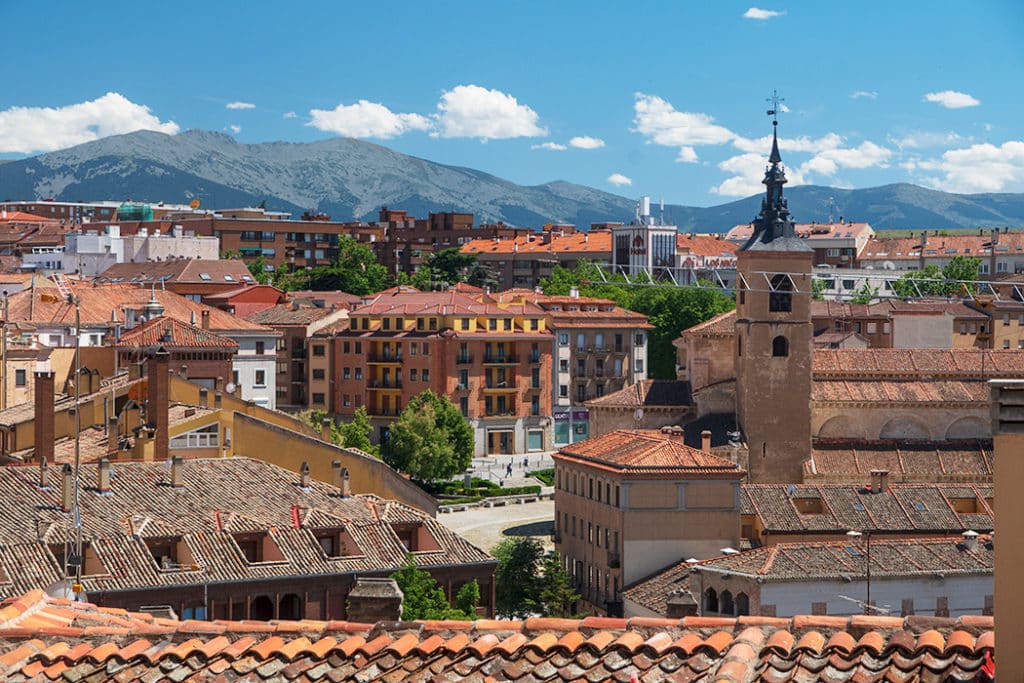
The Aqueduct of Segovia
I’ve kept the best for last – the mind-blowing enormous Roman aqueduct of Segovia towering over Plaza del Azoguejo. Wandering in the shadow of this enormous 2,000-year-old construction is, hands down, one of the most extraordinary things to do in Segovia.
The only thing I saw that comes close to it is the Valens aqueduct that cuts across Ataturk Boulevard in Istanbul, but the Segovia structure is far more impressive. Together with the Roman bridge of Cordoba, it is the finest example of Roman architecture in Spain.

Built around 50 BC, the aqueduct is remarkably well preserved. Consisting of two tears of monumental arches, it stretches for 813 meters and rises 28.5 meters above the ground.
But as awe-inspiring as the scale of the Segovia aqueduct is, to fully appreciate this engineering masterpiece, you have to look closely at the stone slabs that it’s made of.
Beyond the fact that these huge rocks, weighing up to 2 tons each, had to be maneuvered to a great height, they were also put together without any adhesive between them. This mammoth structure is held together entirely by human will without any mortar to glue its 20,400 stones together.
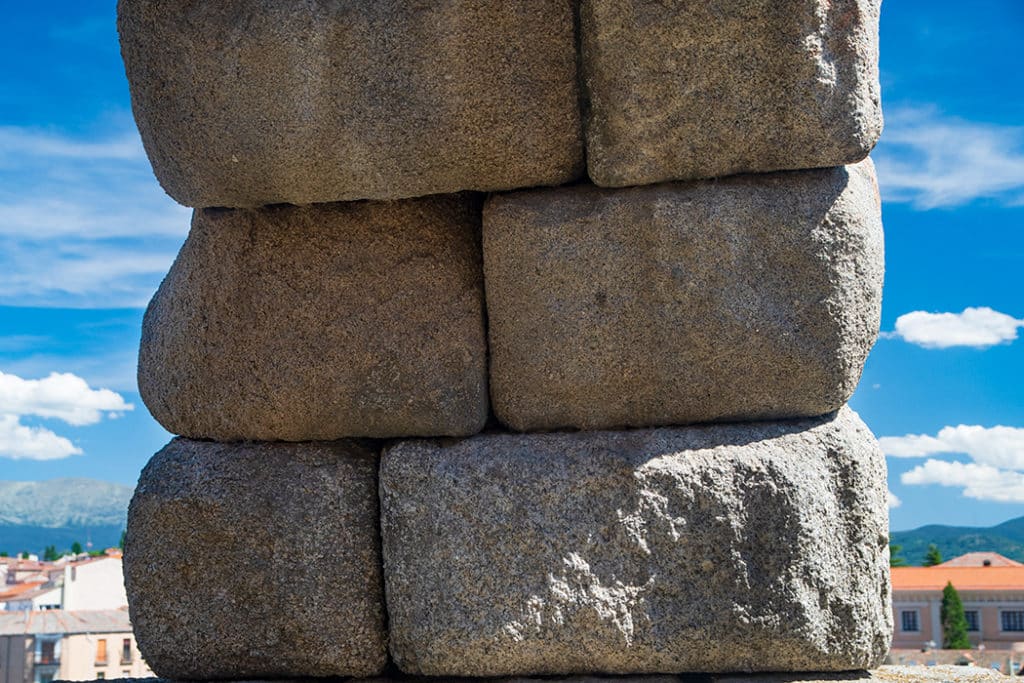
Once you have soaked in the site of the wall from the ground level, climb the stairs to your left to a viewpoint that sits about halfway up the wall. This is where you get your iconic view of the Segovia aqueduct.
From here, climb a few more stairs, walk underneath one of the arches of the wall and you find yourself at the Viewpoint of the Gate (Mirador del Postigo). The vista that opens from here sweeps over the earth-coloured clay rooftops of Segovia towards the distant mountains on the horizon.
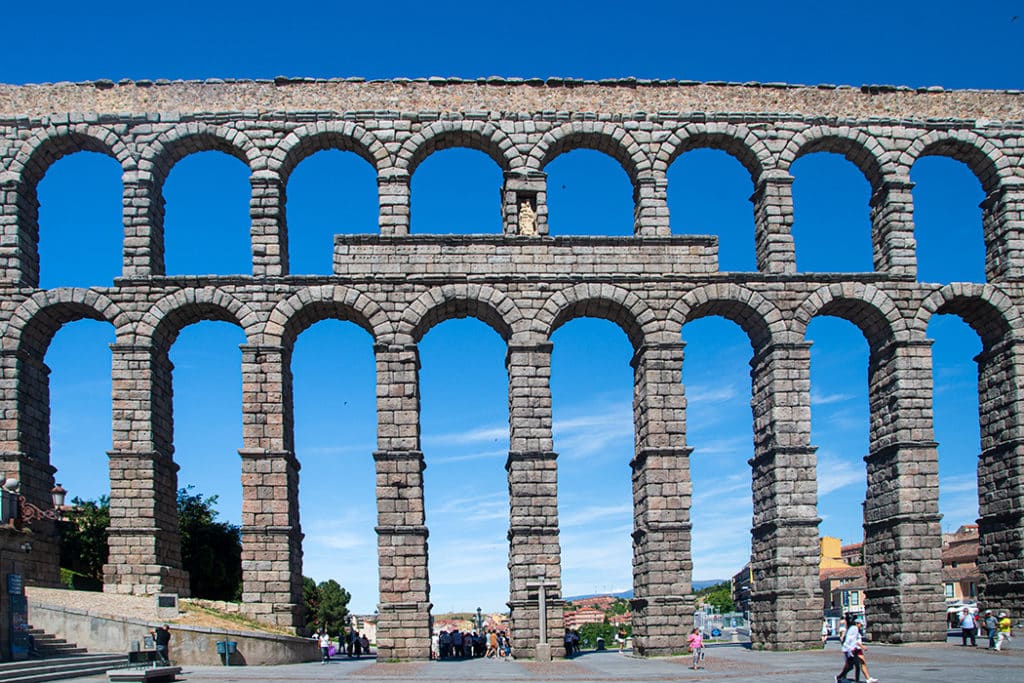
If you feel like basking in the splendour of the aqueduct a little longer, relax at one of the cafes and restaurants at Plaza Azoguejo.
Iglesia de San Millan
Depending on how much time you have left, you should try to visit Iglesia de San Millán on your way to the bus stop. Built in the 12th century, this is one of Segovia’s oldest and prettiest Romanesque churches.
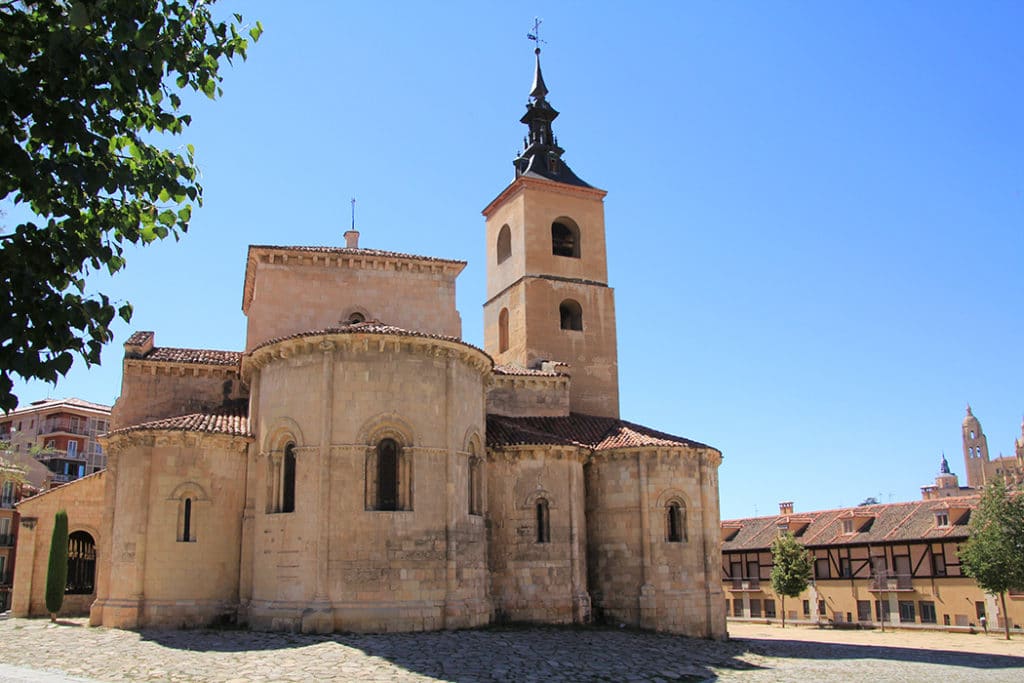
The interior of this church is particularly beautiful, with Romanesque frescoes, artworks painted on the walls, carved capitals and a striking altar. It is a functioning church, and entry is free. And the church is only a few minutes walk from the bus stop.
And there you have it – an amazing day tour to Segovia from Madrid with all of Segovia’s most beloved sites and enough time to enjoy the discovery of Segovia’s splendour.
How to get to Segovia from Madrid
One of the reasons a day tour to Segovia from Madrid is so popular is that you can leave Madrid in the morning and stand in front of Segovia’s aqueduct less than an hour later. The high-speed train from Madrid’s Chamartin station takes less than 30 minutes to reach Segovia.
Train travel is very straightforward in Spain. But to make things even easier, I recommend installing the Omio app and booking your tickets through the app. This way, you can access your tickets in the app at any time. Conductors are happy to scan the digital tickets on your phone, you don’t need to print them.
From Segovia’s Guiomar station, it’s a 20-minute bus right to Centro. And from the bus stop, you can already see the Cathedral of Segovia. It is a 5-minute walk to the Gate of San Andrés.
Where to Stay in Segovia
If you decide to stay in Segovia overnight, you may as well get a room with a view. At Eurostars Plaza Acueducto you can gaze at the aqueduct from floor-to-ceiling windows while lying in your bed.
For something a little bit more economical but still gorgeous, consider Hotel Don Felipe in the heart of Segovia’s old city.
More on Exploring Spain
- 10 Ideas for Planning an Amazing Southern Spain Road Trip
- 26 Things to Do in Cordoba: Guide to Planning Cordoba itinerary
- Roman Cordoba Self-Guided Walk
- Guide to Visiting Cordoba Mezquita, When to Visit and What to See
- Discover Moorish Cordoba in 16 Monuments
- 15 Picturesque Walled Cities in Spain – Beyond Game of Thrones
- 16 Best Things to Do in Avila – Spain’s Amazing Medieval Walled Town
- 17 Fabulous Weekend Breaks in Spain: Must-See Destinations and Hidden Gems
- Sacromonte Caves: The Best-Kept Secret in Granada
- Discover Moorish Granada in One Day on This Self-Guided Walk

